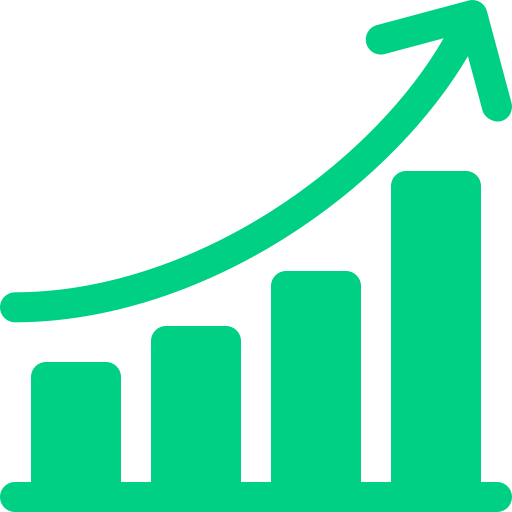Predictive Analytics in Ecommerce: The Edge You're Missing
Here's a scenario: You're sitting on a treasure trove of data, and you're not even wearing an eye patch or shouting 'Ahoy!' Predictive analytics in ecommerce is like that fortune-teller you see at the fair, minus the foggy crystal ball. It figures out what might happen next before you're caught off guard.
With digital ad costs climbing like a squirrel on espresso and customers flitting from site to site faster than a teenager on TikTok, you've got to get ahead of the game. How? By putting your first-party data to work. Sounds complicated? Don’t worry, I'm here to break it down without drowning you in jargon.
What's Predictive Analytics Anyway?
Think of this: Your past data tells you where you've wandered, while predictive analytics shows you where you're headed and the price tag attached. It uses past clicks, shopping carts, and time spent on your site to guess what shoppers might do next and how you can make savvy decisions ahead of time.
Why's this a game-changer?
- Predict what you never saw coming
- Personalise to the point customers think you've got mind-reading powers
- Turn emails and ads from running late to perfectly timed
Let's look at some examples. Amazon, bless them, predicts stock at the neighbourhood level, whereas Glossier can sense customer value so early it's spooky. And some smart direct-to-consumer brands use churn scores to remind customers how wonderful they are before they ghost.
Predictive ecommerce isn’t about drowning in complexities; it’s about finding clarity and swapping guesswork for action.
Spot Long-Term Customers on Day One
Picture this: The first few clicks a customer makes are like whispers about how valuable they’re going to be. But all too often, businesses welcome everyone with the same uninspired discount.
Here’s a better idea:
- Use first steps like basket size or speed of second purchases to guess long-term value
- Invest in tools like Lifetimely or GA4 with BigQuery models to rank customers by predicted lifetime value
- Then, segment people: think red-carpet treatment for high-value customers, gentle nurturing for the middle crowd, and budget-conscious offers for those less likely to bring in the big bucks
Take the example of a coffee brand that slashed its first-time discount by 25%, but only for predicted high-rollers. The result? A cool $80K in margin saved, all without losing conversion. When intent’s strong, folks don’t need bribing — just acknowledgment.
Prevent Customers Leaving Before They Think About It
Retention costs less than finding fresh customers, believe it or not. Yet, budgets often go on the hunt for new faces while existing customers sneak out the back door.
Here’s where predictive churn analytics saves your bacon:
- Keep an eye on habits like missed purchases or less site visits
- Create churn risk scores using these signals
- Use tools like Klaviyo or Segment + Customer.io for pre-emptive win-back actions — emails, WhatsApp nudges, or surprise goodies, all at just the right time
In essence, pulling back just 30% of at-risk customers is far more profitable than a costly new campaign.
Recommend the Next Product Smartly
Decision fatigue is a real problem. With all those choices out there, things can get a bit overwhelming for shoppers.
Predicting the next best product simplifies things and ups your revenue:
- Look at past orders to see patterns or likely follow-ups
- Predict what product customers might want next
- Offer these in post-purchase follow-ups, on-site recommendations, or bundled deals
Brands using Shopify Plus can turn to apps like Rebuy or Crossing Minds to do this without needing to be coding experts. The real magic? Recommendations that appear just right, not random.
Consider a pet supply shop that predicted treat preferences based on dog size, past buys, and the season. They saw a 40% rise in attach rate because customers felt the choice was spot on.
Keep Stock Levels Spot On
Running out of stock? That's like leaving money on the table and telling customers to go elsewhere.
Predictive analytics can quietly keep shelves stocked:
- Forecast demand per SKU, not just by category
- Use pre-orders, waitlists, seasonal trends, and marketing calendars
- Synchronise marketing efforts with available stock — no more promos on already-empty items
For Shopify, tools like Cogsy or Flieber can work their magic. A lack of stock doesn’t just lose you one sale; it can make customers doubt your effectiveness altogether. Keeping stock levels right shows customers you’ve got a handle on things.
Forecast Campaign Performance
Launching ad campaigns based on last year’s success is like driving blindfolded; you’ll get there eventually, but at what cost?
Here's what savvy ecommerce brands do:
- Model customer acquisition cost and lifetime value using past campaign data
- Predict which audiences and channels pay back best
- Tools like Triple Whale and smart data models help predict results before you burn through the budget
This way, you’re not guessing. You’re forecasting, validating your approach, audience, and investment before the money is off to the races.
Predictive Ecommerce = Practical Magic
The real difference between stagnant ecommerce brands and those shooting upwards isn’t a matter of budget. It’s how they’re using predictive strategies to make sharper decisions faster.
- Swap generic discounts for precise, data-driven suggestions
- Know who’s likely to leave, and keep them around
- Send emails at the perfect time, not all at once
- Promote SKUs based on probability, not leftover stock
We're talking clear patterns, sensible tools, and clever timing.
Final Thought: Try a Small Prediction Today
Predictive analytics doesn’t have to be about an entire tech overhaul delayed by sleepless nights. Start with one small move:
- Which customers might turn out most valuable?
- Who's on the brink of vanishing?
- Which campaign still needs a rethink?
Small forecasts now mean significant wins tomorrow.
Stop throwing out that catch-all 15% discount. Offer folks what they really crave, just when they're ready to say 'yes.'
You've got the data. Predictive analytics simply shows you how to harness it. Think of it as setting yourself up like a Stoic — not fate-bound, but ready for what’s next.
Tools Worth Trying
- Klaviyo: Predictive customer lifetime value and churn scores
- Lifetimely: Early cohort forecasting
- Cogsy: Predictive inventory for Shopify
- Rebuy: Personalised bundles and cross-sells
- Segment + Customer.io: Multi-channel, behaviour-based journeys
- Looker + BigQuery: Custom predictive data modelling
- Triple Whale: Forecasting advertising costs and returns
Because in ecommerce, that competitive edge isn’t luck — it’s foresight. It's all about knowing when and where to look.





